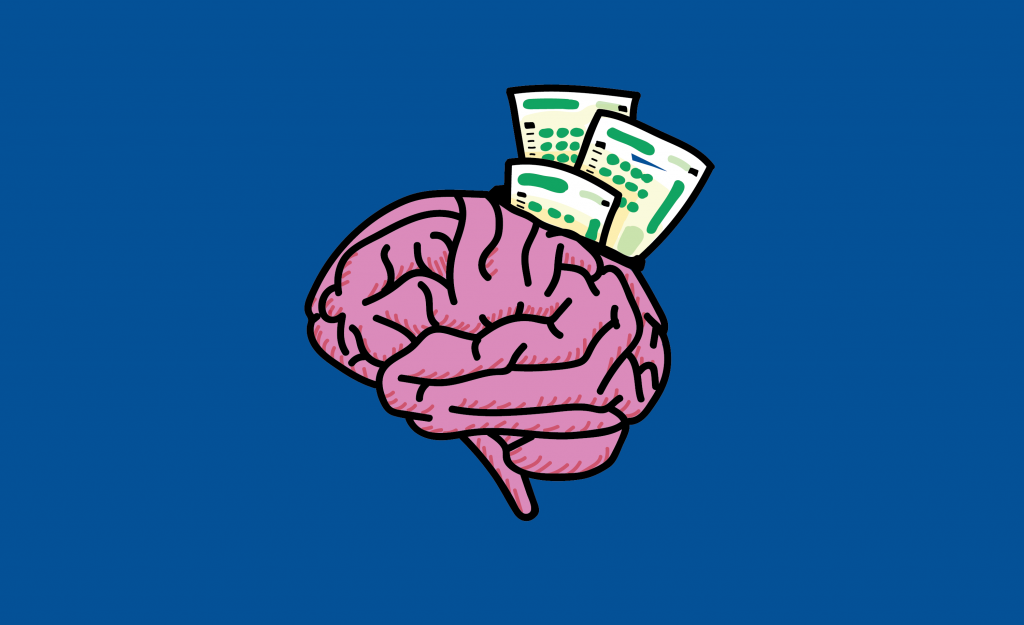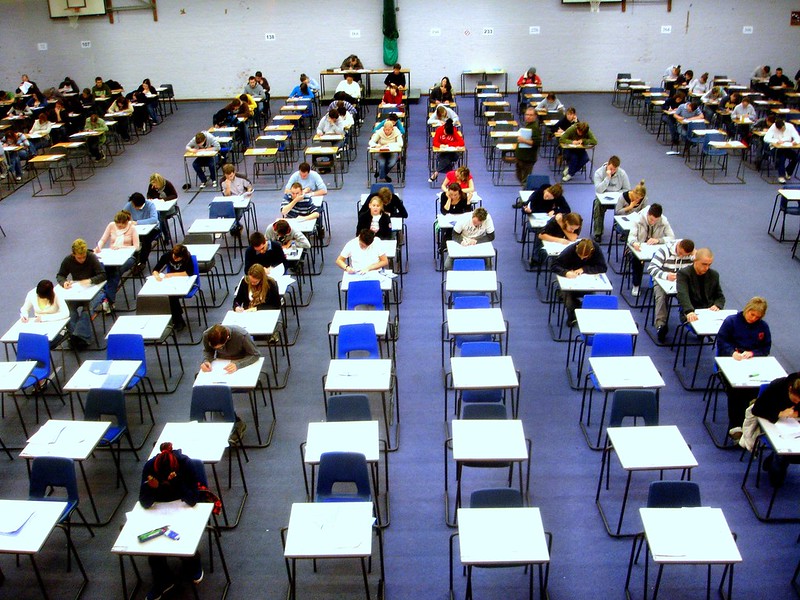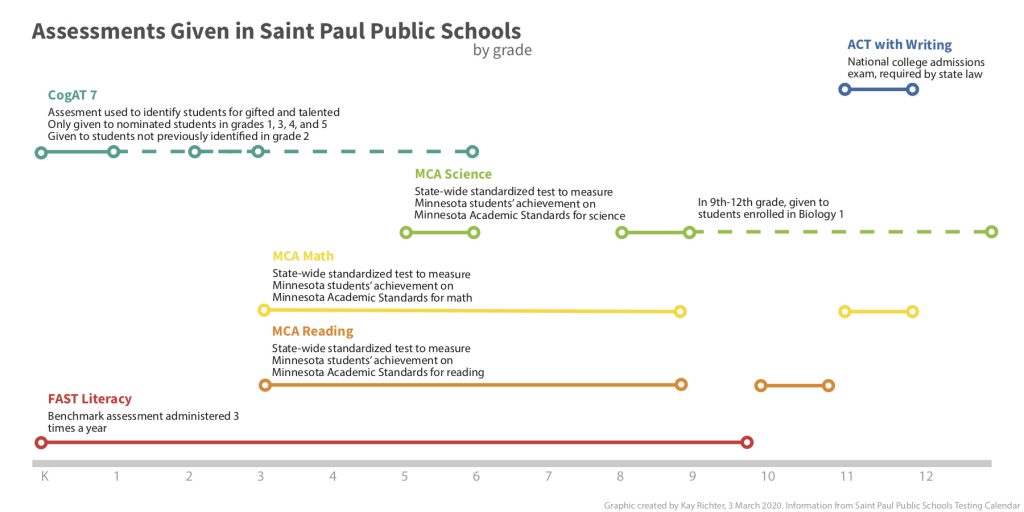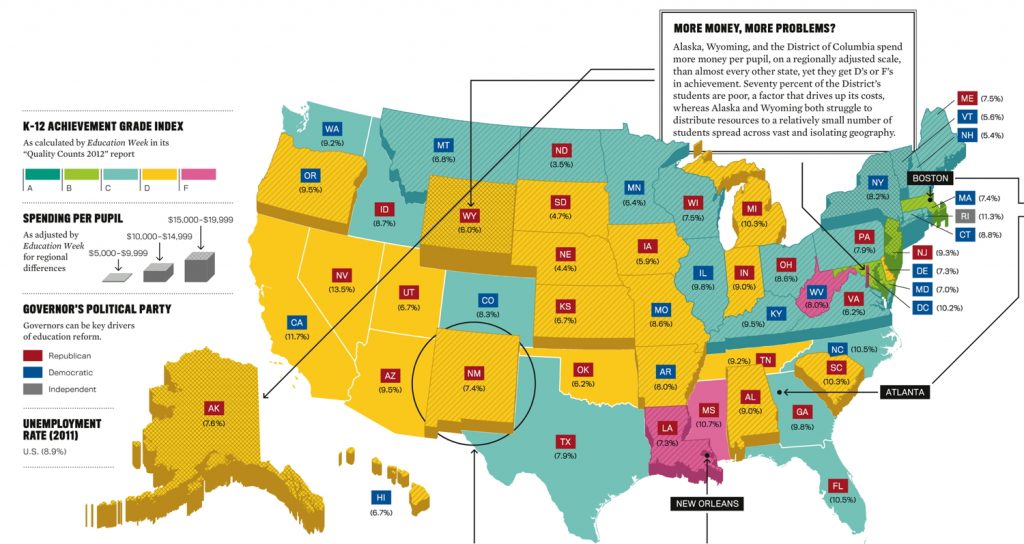Lowering the Stakes: How Can We Reimagine Assessment?
Registration Link

Abstract
Originating in the mid-1800s, standardized testing has a long and controversial history in the United States. With the presence of college entrance exams and technological advances like scantrons, the industry of standardized testing has matured and permeated through all levels of education. As scores have critical effects on important decisions, standardized tests are usually high-stakes. Though they are aimed at holding schools accountable for students’ learning and performance and making sure all students are getting a quality education, the reality of the tests sometimes don’t live up to the goals. Given this history, we want to explore how standardized high-stakes assessment impacts education, from the classroom level to the state legislature. How do test scores affect district resources? How does preparing for tests impact how teachers teach? What is at stake when students take these tests?

At the same time, assessment doesn’t have to be the focus of education. In our forum, we hope to start a community dialogue about how Saint Paul Public Schools and surrounding districts are thinking about assessment and what steps they are taking to help students learn critically while still meeting test requirements. The forum will feature a panel with participants from all facets of this topic – ideally from student to school board member to district representative – and will be open to community questions.

Background
Standardized testing has a long history in the US. In the mid-1800s, Boston school reformers Horace Mann and Samuel Gridley Howe, first introduced standardized testing to Boston schools. The new test aimed at providing a “single standard by which to judge and compare the output of each school”. The standardized program was quickly adopted by school systems nationwide. In the year of 1914, the director of Training School at the State Normal School at Kansas, Frederick J. Kelly, created the earliest known published multiple-choice test, The Kansas Silent Reading Test (1914-1915). Kelly created the test to reduce “time and effort” in administration and scoring.

The more modernized standardized testing starts after the Elementary and Secondary Education Act (ESEA) in 1965, and the use of standardized tests have been boosted since 2002’s No Child Left Behind Act (NCLB). However, students from the United States slipped from being ranked 18th in the world in math in 2000 to 40th in 2015, and from 14th to 25th in science and from 15th to 24th in reading. Furthermore, Trends in International Mathematics and Science Study (TIMSS) data collected in 1995, 1999, 2003, 2007, 2011 and 2015 showing that the United States is behind many other developed countries in math and science test scores. Mentioned by James Pellegrino (2014), “The problem is that other purposes of assessment, such as providing instructionally relevant feedback to teachers and students, get lost when the sole goal of states is to use them to obtain an estimate of how much students have learned in the course of a year”. Despite using standardized testing for several decades, educators and policy makers do not yet know how to use test based incentives to consistently generate positive effects on achievement and to improve education. Indeed, the overuse of standardized testing might lead to a narrower curriculum which emphasizes towards “teaching to the test”. As a result, it is important to bring into conversation about how standardized test-based programs could be more effectively designed, for both the federal education system as a whole, and more narrowly at the state and district level.

Audience
Standardized assessment has such broad effects that this forum is applicable to everyone with a stake in public education, such as students, teachers, parents, and all other community members.
Expected Takeaways
We hope to foster an understanding of the wide-reaching impacts of testing on individuals, districts, and communities. Beyond that, we want to begin a conversation exploring how testing can be reimagined to equitably support our students.
Logistical Information
Date: April 22nd
Time: 6:00-8:00 pm
Location: Online Webinar (registration link)
Panelists:
- Adam Van der Sluis: Assistant Director of Admissions at Macalester
- Silvy Un Lafayette: Director of Assessment, Research and Evaluation at St. Louis Park Public Schools
- Gao Thor: Assessment & Research Specialist at St. Louis Park Public Schools
- Malachi Raymond: High school student; member of St. Paul Public Schools Student Engagement Advancement Board (SEAB)
- Atquetzali Quiroz: High school student; member of St. Paul Public Schools SEAB
- Josh Fraser: Principal of Brooklyn Center Middle and High School
- Nate Gibbs: Assistant Principal from Minnetonka High School
View the Webinar
Further Readings
- History of Standardized Testing in the US Timeline by the National Education Association
- “Students Get What Flows Downward”: District Leaders’ Rationalizations of the Standardized Testing of Children by Charles Munter and Cara Haines (accessible through OpenAthens through Macalester or your academic institution)
- No These Things Will Not Be on the Final Exam podcast by Ira Glass
